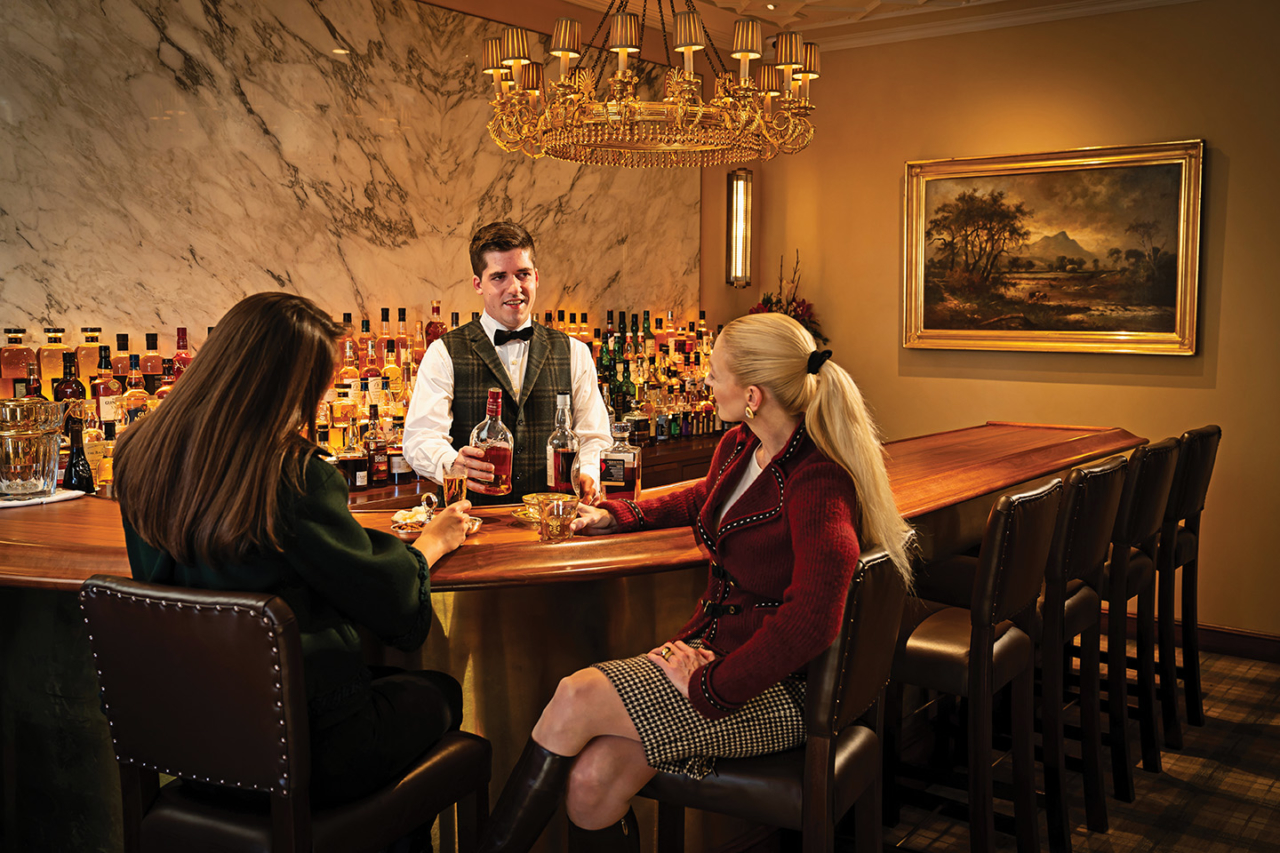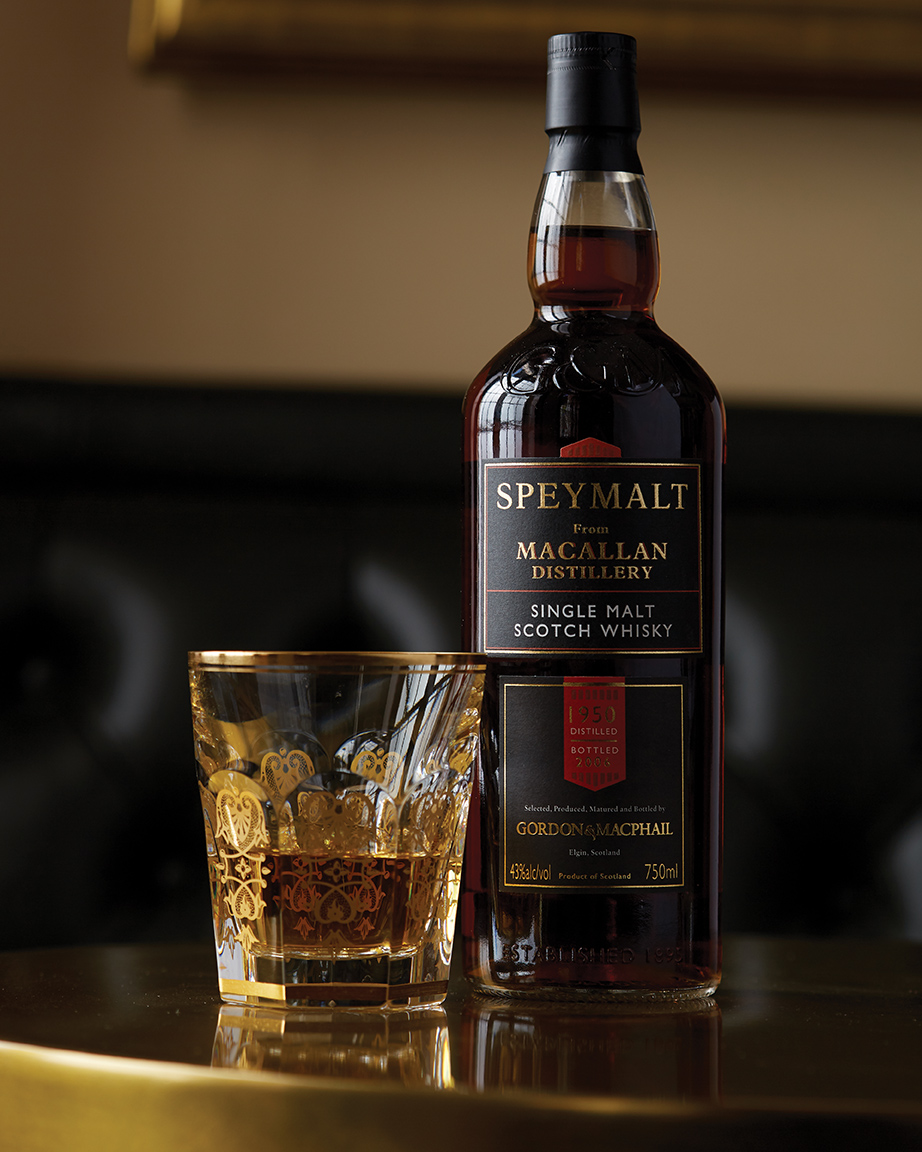What I learned about myself and life in one afternoon spent drinking Scotch
Written by Meredith Lindemon | Photography by John Farrell
When it comes to drinking Scotch, it is best to remember that it is a spirit. As with all things spiritual, it’s best not to overdo it — but that’s also an understanding that we must, in this case, drink in order to learn. This time at The Stewart, I learned about the mystical nature of drinking, by way of Scotch, with Natalie Tapken, wine-and-beverage director of Bluepoint Hospitality.
While there are innumerable things to memorize about Scotch, it’s best to focus on the first, second and third sips of the drink itself. Tapken explains these first three sips are like an introduction between strangers. She says, “The first is the hello; the second, how are you; the third is the ‘I like you’ part of the conversation.”
With respect to these three sips, the first gives us the sometimes overpowering taste of alcohol; the second gives us the aromatics of the Scotch itself; and the third sip is the point at which we reach the conclusion as to whether we want to continue drinking this particular type of Scotch or move on to something we find more palatable.

Scotch, Generally Speaking
When it comes to Scotch, Tapken defines the spirit you will find at The Stewart by what it isn’t: no blends, no bourbons, no Japanese whisky. The Stewart’s range consists of only single-malt Scotch whisky from distillers in one of the five regions in Scotland (in addition to their selection of Champagne). There is a purpose for this, she says, which is to create a specific range of flavor, a definite vision that’s reminiscent of what Winston Churchill would pour
to drink.
The five regions include Highland, Speyside, Lowland, Campbeltown and Islay. Many of us know Highland Scotches, which are the most pleasing and most well-known to drinkers of the spirit. Speyside, home of the River Spey, are whiskies known for their peat and fruity flavor. Lowlands whiskies are lighter in character, often served as predinner drinks. Campbeltown whiskies are flavorful, rich and varied. Islay, often referred to as the “perfect” form of Scotch, is known for its fiery, peated flavors.
Glassware & The Science of Sipping
Like Champagne, the type of glass you drink your Scotch out of is important. Tapken recommends paying close attention to your glassware and suggests drinking out of a pear-shaped nosing glass or a tumbler. The type of glass you use enhances the nose of the drink. For less complex aromatics, Tapken recommends using a pear-shaped nosing glass and holding the glass by the stem as you nose it — or sniff it — then commence sipping.
On the first sip, there’s also a process that seems mechanical before it becomes natural to the drinker. The first sip should be held for 12 seconds as you taste the Scotch with your entire tongue. Then swallow before breathing in and then exhaling. This will allow you to taste the aromatics. I was drinking a Glenmorangie, a Highlands Scotch whisky, which has vanilla aromatics indicative of its being aged in American oak barrels. As I continued to drink, we added water to the Glenmorangie, which changed the taste by removing the essence of the alcohol, transforming the vanilla into a dill-coconut.


Good Swimmers & Smokey Peats
The color of the Scotch is also something Tapken discussed with me. Scotch more gold in color is aged in American oak, while the darker types are aged in European oak. As we continued drinking, we tried a Dalmore, another Highland Scotch whisky, repeating the three steps to get to know it and discovering that it starts as a burnt-orange rind before turning into something more pruney in flavor after adding water. “When someone describes a Scotch as a good swimmer, it means that it tastes good with water,” says Tapken. Some Scotch tastes better with water — while others do not.
Tapken poured an Ardbeg for the third, which is a dark Islay Scotch, from the southernmost of the Inner Hebrides Islands off the west coast of Scotland. Islay Scotches are the more peaty, medicinal spirits that Adam Golinski, bartender at The Stewart, says, “I describe this taste as a memory. It tastes like camping, ribs or an outdoor fire.” And it did to me as well: The mixture of the botanicals and the slight taste of iodine gave it its smokey flavor, which kind of felt like tasting a dream of something nostalgic.
Ordering & Drinking Scotch
While many people order scotch on the rocks, you wouldn’t want to do that with a better brand. “Do not add the rock,” says Tapken. If anything, Golinski adds, “keep it in the glass for 15 seconds then remove it.”
The provenance of the term rock itself refers to the rocks on the River Spey in Scotland and has less to do with having ice cubes in your drink.
When it comes to drinking what you just ordered, you also want to focus on your pace. Taking the time to get to know your drink in those first few sips is the critical part of understanding what you like and ultimately gaining the knowledge of what you actually enjoy drinking, which is the first few steps down the road to becoming an expert. The staff at The Stewart try to maintain this pace for patrons, helping them get to know their favorite spirit in a way that goes beyond pouring drinks into glasses, serving them and letting patrons drink without thinking about what they’re actually doing.
Tapken, Golinski and the rest of the staff at The Stewart all have the kind of encyclopedic knowledge that comes from a commitment to education, which in turn gives them the ability to teach me, in one afternoon, how to learn my own tastes and what I actually enjoy. And as the spirit is analogous to life, we really shouldn’t mess around with those first three sips, because it’s not necessary to like everything we try. CS
